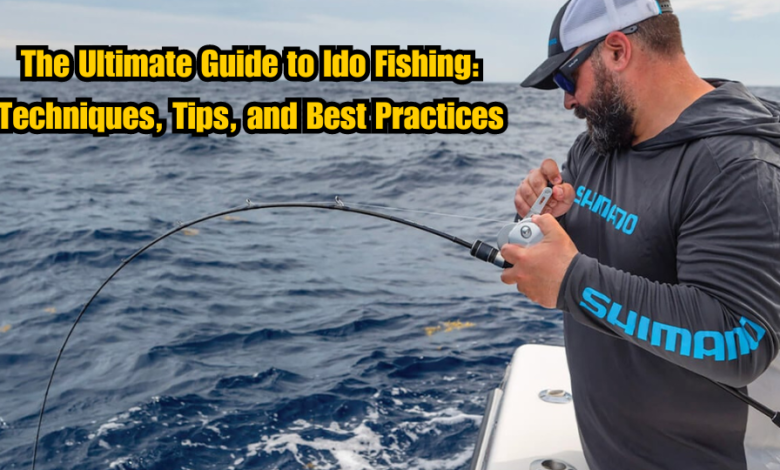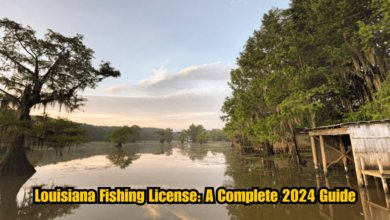The Ultimate Guide to Ido Fishing: Techniques, Tips, and Best Practices

Fishing has been an integral part of human history, evolving from a basic survival skill into a beloved hobby and even a professional sport. Ido fishing stands out as a unique and effective technique that combines traditional fishing methods with innovative strategies, making it ideal for both beginners and experienced anglers alike. In this comprehensive guide, we will explore the world of Ido fishing, detailing the best techniques, the right gear, and essential tips to ensure a successful catch.
What is Ido Fishing?
Ido fishing refers to a method of fishing that integrates the latest technologies with time-tested strategies. Originally practiced in Japan, this method has spread globally due to its effectiveness in catching a wide variety of fish species. The name “Ido” stems from the Japanese word for “motion,” which is reflective of the constant adjustments and active engagement that this style of fishing demands.
Why Choose Ido Fishing?
- Versatility: Unlike many fishing methods that limit you to a particular type of water body or species, Ido fishing allows for fishing in rivers, lakes, and even saltwater environments.
- Technology Integration: Many Ido fishing enthusiasts make use of sonar and GPS technology to locate fish-rich areas, giving them a considerable edge over traditional fishing methods.
- Sustainability: Ido fishing promotes a catch-and-release culture that helps protect fish populations, making it a responsible choice for eco-conscious anglers.
Essential Gear for Ido Fishing
To engage in Ido fishing, having the right gear is crucial. Below is a breakdown of the essential equipment every Ido angler needs:
1. Rod and Reel Combination
When it comes to Ido fishing, the right rod and reel combination can make all the difference.
- Spinning Rods: These are ideal for beginners due to their ease of use and versatility. They work exceptionally well in both freshwater and saltwater environments.
- Baitcasting Rods: For more experienced anglers, baitcasting rods offer precision and control, especially when targeting larger fish species. These rods are designed to handle heavier lines and lures, making them perfect for deep-water Ido fishing.
2. Fishing Line
Choosing the right fishing line depends on the type of fish you aim to catch:
- Monofilament Line: This is the most common type of line used in Ido fishing. It is durable, easy to use, and highly effective for catching medium-sized fish.
- Braided Line: For larger fish or when fishing in deep waters, a braided line offers greater strength and durability. It is less likely to snap, even under high tension.
3. Hooks and Baits
The choice of hooks and baits largely depends on the species of fish you’re targeting:
- Live Bait: Commonly used in Ido fishing, live bait such as minnows, worms, and shrimp are highly effective in attracting a variety of fish species.
- Artificial Lures: For those who prefer not to use live bait, artificial lures such as jigs, spinners, and crankbaits can be excellent alternatives. They mimic the movements of live prey and are often used in conjunction with sonar technology to attract fish.
Ido Fishing Techniques
Mastering the art of Ido fishing requires understanding several key techniques. Whether you’re new to this method or an experienced angler looking to refine your skills, these strategies will enhance your fishing experience.
1. Drifting Technique
One of the most effective Ido fishing techniques is drifting. This involves allowing the current to carry your bait or lure while maintaining tension on the line. By doing this, the bait appears more natural to the fish, increasing your chances of a bite.
- How to Drift: Start by positioning your boat at the upstream end of the waterway. Cast your line downstream and let the current do the work. Be sure to monitor the line for any movement, as a slight pull could indicate a fish has taken the bait.
2. Jigging Technique
Jigging is another essential technique used in Ido fishing, especially in deep-water settings. This method involves vertical motion to make the bait or lure appear as though it’s moving up and down in the water.
- How to Jig: Drop your bait to the bottom of the water body. Using short, sharp movements of the rod, lift the bait off the bottom and let it sink back down. Repeat this process while maintaining tension on the line.
3. Sonar-Assisted Fishing
One of the hallmarks of Ido fishing is the integration of modern technology, such as sonar devices. These tools help you locate schools of fish in real-time, giving you a significant advantage.
- Using Sonar Effectively: Place the sonar transducer in the water and scan the area for fish. Once you’ve identified a hotspot, cast your line and use the drifting or jigging techniques to maximize your chances of a successful catch.
Top Fish Species for Ido Fishing
Ido fishing is suitable for a wide variety of fish species. Below are some of the most popular fish targeted by Ido anglers.
1. Bass
Bass are a favorite among Ido anglers due to their abundance and aggressive behavior. They can be found in both freshwater and saltwater environments.
- Best Techniques for Bass: Drifting and sonar-assisted fishing are highly effective for bass fishing, especially when using live bait like minnows.
2. Trout
Trout are another popular target for Ido fishing, particularly in cold-water streams and rivers.
- Best Techniques for Trout: Jigging works exceptionally well for trout, especially when using small jigs or artificial lures.
3. Walleye
Walleye are known for their elusive nature, making them a challenge for even experienced anglers.
- Best Techniques for Walleye: Sonar-assisted fishing combined with drifting is a winning combination for catching walleye, especially in deep-water settings.
Best Locations for Ido Fishing
When it comes to Ido fishing, location is everything. The following are some of the best spots around the world to practice this technique:
1. Lake Biwa, Japan
Known as the birthplace of Ido fishing, Lake Biwa offers a diverse range of fish species, including bass and trout. The lake’s depth and clarity make it an ideal spot for sonar-assisted fishing.
2. The Great Lakes, USA
The Great Lakes offer a variety of fish, from bass to walleye, making them a hotspot for Ido anglers. The large size of the lakes allows for the use of both drifting and jigging techniques.
3. British Columbia, Canada
For those interested in catching trout, British Columbia offers some of the best trout fishing in the world. The cold-water rivers are ideal for using the jigging technique.
Seasonal Considerations for Ido Fishing
The time of year plays a crucial role in determining the success of your Ido fishing trip. Understanding the seasonal habits of fish can help you optimize your strategy.
Spring
In spring, fish are generally more active due to warmer water temperatures and increased food availability. This is the best time to use live bait such as worms and minnows.
Summer
During the summer, fish tend to move to deeper waters to escape the heat. This makes sonar-assisted fishing and jigging highly effective techniques for reaching fish at greater depths.
Fall
Fall is a transition period for many fish species as they prepare for the winter months. During this time, fish are more likely to bite as they seek to build up fat reserves. Drifting techniques work particularly well in the fall.
Winter
Winter fishing can be more challenging due to the cold temperatures, but it’s also rewarding for those willing to brave the elements. Ice fishing is a popular winter variation of Ido fishing, especially in northern regions.
Environmental Impact and Sustainability
One of the core principles of Ido fishing is its emphasis on sustainability. By practicing catch-and-release and using eco-friendly gear, Ido fishing helps to protect fish populations for future generations.
- Best Practices: Always use barbless hooks when practicing catch-and-release. Avoid overfishing and be mindful of the size and species limits in your area.
Conclusion: Mastering Ido Fishing
Ido fishing is more than just a method; it’s a holistic approach to fishing that combines tradition, technology, and sustainability. By mastering techniques such as drifting, jigging, and sonar-assisted fishing, and by choosing the right gear for your needs, you can ensure a successful fishing trip every time.
Whether you’re fishing in the calm waters of Lake Biwa or the vast expanse of the Great Lakes, the strategies and tips outlined in this guide will help you become a more proficient and responsible angler. Embrace the future of fishing with Ido techniques, and make your next fishing trip your best one yet.
For more in-depth fishing techniques, be sure to explore expert recommendations on sustainable fishing practices here. To learn more about the best locations for Ido fishing, check out this guide on top global fishing destinations here.



